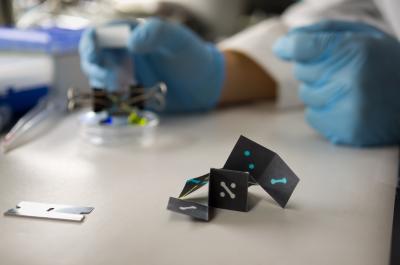Researchers from the University of Texas at Austin have created a low-cost three dimensional paper sensor capable of testing diseases such as HIV and malaria. The 3D sensors, inspired by Origami, have been developed by professor Richard Crooks and a doctoral student Hong Liu.
 Low cost 3D paper sensor
Low cost 3D paper sensor
Developed to function as point-of-care sensors, the low-cost sensors have been aimed for use in developing countries where lab-based tests are not viable due to insufficient resources and infrastructure. One dimensional paper sensors are available in the market today but have certain limitations. Unlike the paper sensors used for pregnancy tests, the 3D sensors are capable of testing for additional substances in smaller surfaces.
Professor Crooks explained that the easy-to-produce 3D sensors can be folded by anybody and can be easily distributed by volunteers. The results of the researcher’s experiments using origami Paper Analytical Device were published in the October issue of Journal of the American Chemical Society and also in the recent issue of Analytical Chemistry.
The inspiration was derived from a paper published by George Whitesides of Harvard University. Whitesides developed a 3D microfluidic paper sensor for testing biological targets.
For the origami Paper Analytical Device, Crooks and his team fabricated the sensor using photolithography. The folding of the sheet into multiple layers was accomplished in less than a minute and requires no special alignment tools. The research team used their fingers to fold the paper and then applied the required pressure. A hydrophobic material is applied into the chromatography paper, which channels the sample to be tested, such as saliva, blood and urine. The targets in the sample then react with the detectable manner and would result in a change of color, detectable by the human eye.
Source: http://www.utexas.edu/